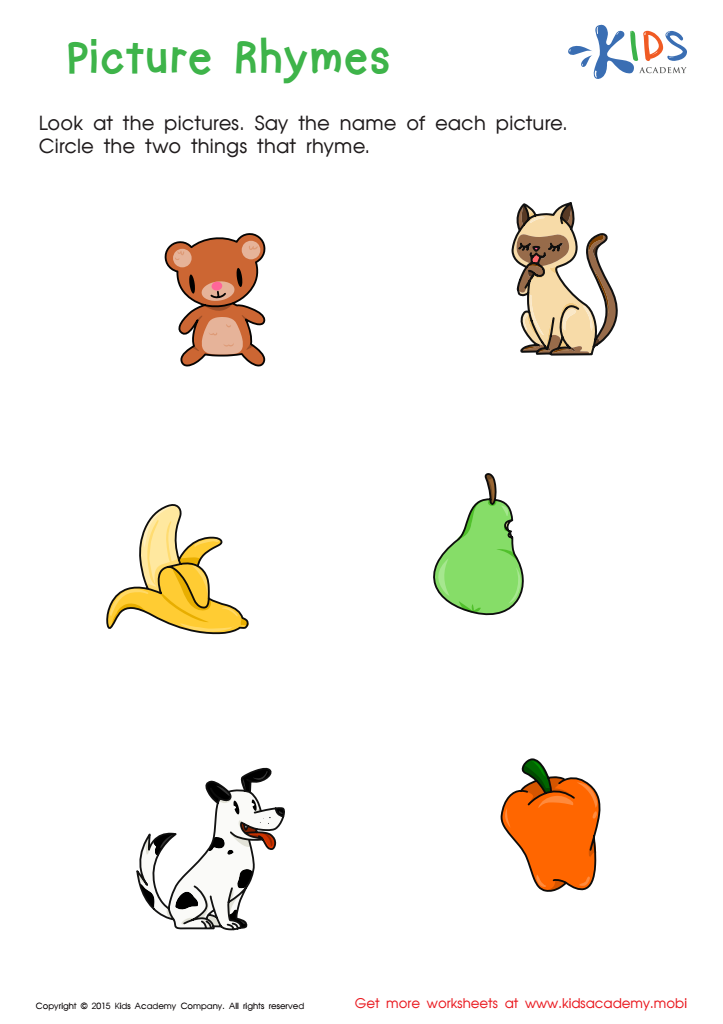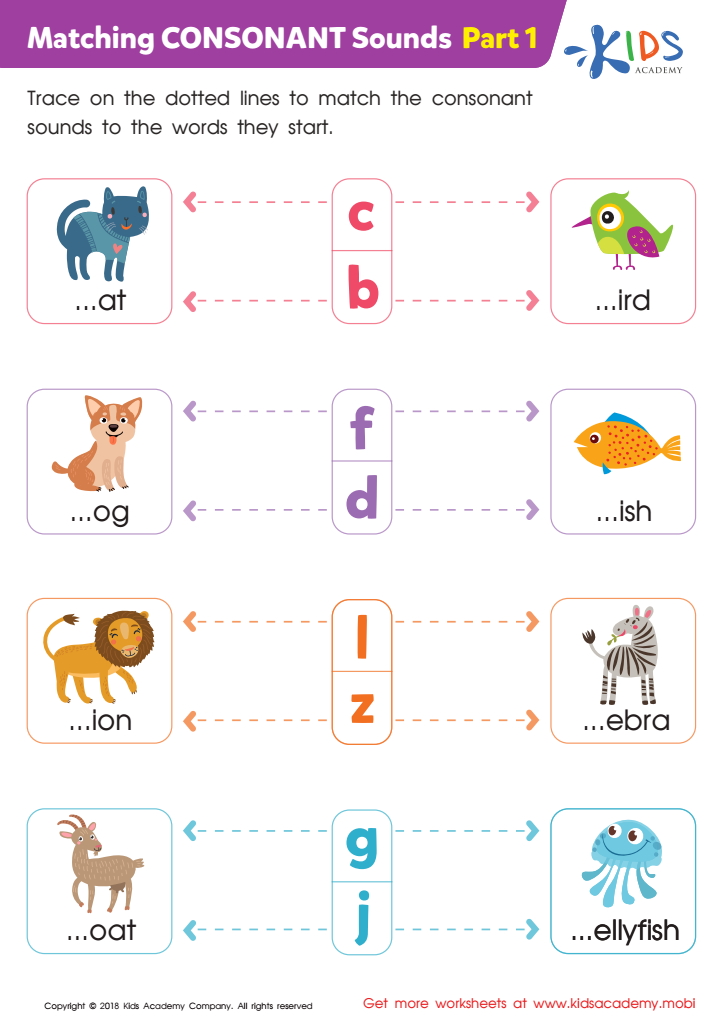Sound recognition Normal Alphabet Worksheets for 4-Year-Olds
4 filtered results
-
From - To
Welcome to our Sound Recognition Normal Alphabet Worksheets for 4-Year-Olds! These engaging worksheets are designed to help young learners develop crucial sound recognition skills essential for literacy. Our fun, interactive activities encourage children to identify and connect letters with their corresponding sounds, enhancing phonemic awareness. Each worksheet features colorful illustrations and straightforward instructions, making learning enjoyable and approachable for preschoolers. By integrating play with education, our worksheets aim to build confidence in early readers. Download these printable resources today, and watch your child’s reading skills flourish as they discover the wonderful world of letters and sounds! Perfect for home or classroom use.


Rhyming Words Rhyming Worksheet


Long and Short U Worksheet


First Words: Picture Rhymes Worksheet


Matching Consonant Sounds: Part 1 Worksheet
Sound recognition and understanding the normal alphabet are crucial for 4-year-olds as they lay the foundational stones for literacy and communication. At this age, children are in a critical stage of cognitive development, absorbing language and sound patterns that will influence how they read and write in the future.
When parents and teachers emphasize sound recognition, they engage children's auditory skills, promoting phonemic awareness—an essential part of learning to read. Recognizing sounds associated with letters helps children decode words, an ability that directly impacts their reading proficiency. Furthermore, this skill aids in improving vocabulary and speech development, allowing children to express themselves more clearly.
Additionally, sound recognition fosters critical thinking and analytical skills. As children learn to identify different sounds and associate them with letters and words, they begin to understand and categorize their environment, enhancing their overall cognitive development.
Moreover, engaging in activities that promote these skills—like singing songs, reading aloud, or playing phonetic games—creates a fun and interactive learning environment that strengthens the bond between educators and young learners. Thus, making sound recognition a priority not only enhances academic skills but also supports holistic child development.
 Assign to My Students
Assign to My Students

















